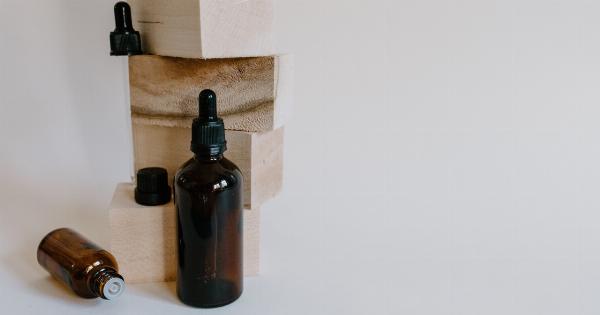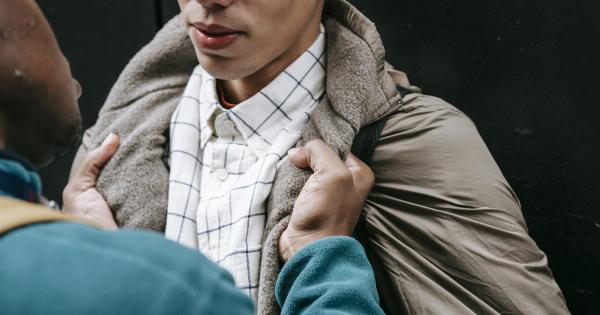Ear pressure, also known as ear fullness or ear congestion, is a common symptom that many people experience. It can be uncomfortable and even painful at times. Ear pressure occurs when there is a change in the pressure within the middle ear.
Causes
There are several potential causes of ear pressure. Understanding these causes can help in identifying the appropriate treatment for relief. Here are some of the common causes of ear pressure:.
1. Eustachian Tube Dysfunction
The Eustachian tube is a small passage that connects the middle ear to the back of the throat. Its main function is to equalize the pressure in the middle ear with the atmospheric pressure.
However, when the Eustachian tube is blocked or doesn’t function properly, it can lead to a build-up of pressure in the middle ear.
2. Sinus Infections
Sinus infections, also known as sinusitis, can cause ear pressure as the inflammation and congestion in the sinuses can affect the Eustachian tubes. This can lead to a feeling of fullness or pressure in the ears.
3. Allergies
Allergies can cause the lining of the Eustachian tubes to become swollen or congested, leading to ear pressure. Common allergens, such as pollen, dust mites, and pet dander, can trigger allergic reactions and result in ear congestion.
4. Air Travel
During air travel, changes in cabin pressure can affect the Eustachian tubes, leading to a feeling of ear pressure. This can be particularly bothersome during take-off and landing when pressure changes are most significant.
5. Fluid Accumulation
Fluid accumulation in the middle ear can cause ear pressure. This is common in conditions such as middle ear infections or otitis media.
The presence of fluid can interfere with normal pressure equalization and result in a feeling of fullness or pressure.
6. Temporomandibular Joint (TMJ) Dysfunction
Temporomandibular joint dysfunction, also known as TMJ disorder, can cause ear pressure as the jaw joint is located close to the ear. Dysfunction in this joint can lead to referred pressure or pain in the ear.
7. Barotrauma
Barotrauma occurs when there is a significant change in pressure between the external environment and the middle ear, such as during scuba diving or flying in an unpressurized aircraft.
This rapid pressure change can cause ear pressure and sometimes even damage to the ear.
8. Foreign Object
Sometimes, a foreign object, such as a small insect or debris, can accidentally enter the ear canal and lead to ear pressure. This can be accompanied by other symptoms like pain, itching, or hearing loss.
9. Earwax Buildup
Excessive accumulation of earwax can block the ear canal and disrupt normal pressure equalization, leading to ear pressure. This can occur when there is an overproduction of earwax or when it is not properly removed through regular cleaning.
Treatment
The treatment for ear pressure depends on the underlying cause. It is important to consult a healthcare professional for an accurate diagnosis and appropriate treatment. Here are some common treatment options:.
1. Decongestants
If the ear pressure is caused by allergies or sinus congestion, decongestants can help reduce the congestion and relieve ear pressure.
They work by shrinking the swollen blood vessels and reducing inflammation in the nasal passages and Eustachian tubes.
2. Nasal Steroids
Nasal steroids are commonly used to treat allergic rhinitis and can also be beneficial in relieving ear pressure caused by allergies or inflammation. They work by reducing inflammation and inhibiting the release of chemicals that cause congestion.
3. Antibiotics
If the ear pressure is due to a bacterial infection, such as a sinus or middle ear infection, antibiotics may be prescribed. Antibiotics help to eliminate the infection and reduce inflammation, relieving the associated ear pressure.
4. Earwax Removal
If the ear pressure is caused by excessive earwax buildup, the removal of earwax may relieve the symptoms. It is important to have earwax removed by a healthcare professional using safe and appropriate methods to avoid any potential damage to the ear.
5. TMJ Treatment
If ear pressure is related to TMJ dysfunction, treatment options may include jaw exercises, physical therapy, pain medications, and the use of oral splints or mouthguards to reduce jaw clenching or teeth grinding.
6. Autoinflation
Autoinflation is a technique that can help open the Eustachian tubes and equalize the pressure in the middle ear. It involves closing the nostrils and gently blowing air into the nose to force air into the Eustachian tubes.
This can be done using specialized devices or by simply inflating a balloon through the nose.
7. Pain Relievers
If ear pressure is accompanied by pain, over-the-counter pain relievers such as acetaminophen or ibuprofen can help alleviate the discomfort. It is important to follow the recommended dosage and consult a healthcare professional if the pain persists.
8. Avoiding Triggers
If certain triggers, such as specific allergens or activities like scuba diving, consistently cause ear pressure, it may be beneficial to avoid or minimize exposure to these triggers.
Identifying and avoiding triggers can help prevent recurring episodes of ear pressure.
9. Seeking Medical Intervention
In some cases, medical intervention may be required to alleviate ear pressure.
This can include procedures like myringotomy (insertion of tiny ear tubes), tympanoplasty (reconstruction of the eardrum), or surgical correction of structural abnormalities.
10. Prevention
Preventing ear pressure can be possible in certain situations.
Some preventive measures include staying hydrated, avoiding rapid changes in altitude, practicing good ear hygiene, and addressing underlying conditions such as allergies or sinus issues promptly.
Conclusion
Ear pressure can be a bothersome symptom that can have various causes. It is crucial to determine the underlying cause and seek appropriate treatment to relieve the discomfort.
Consulting a healthcare professional can help in identifying the cause and designing an individualized treatment plan. By addressing the root cause, it is possible to alleviate ear pressure and improve overall ear health.




























